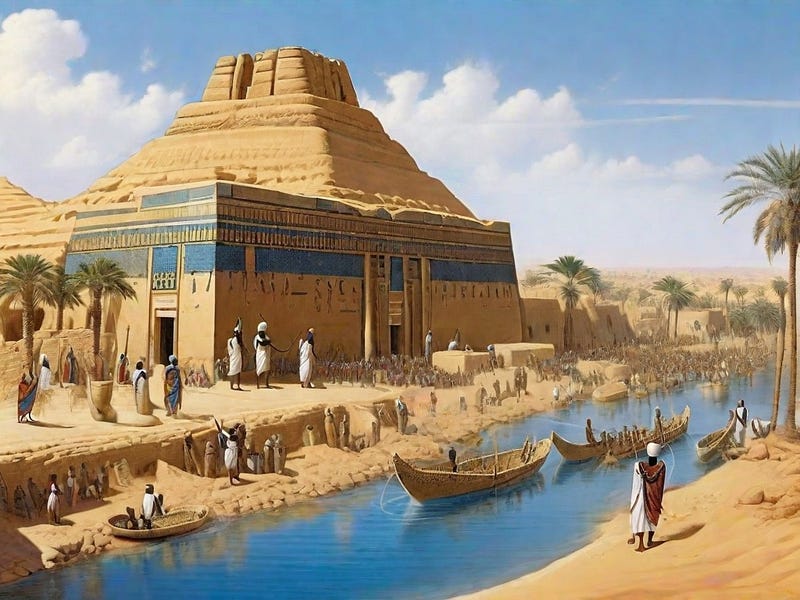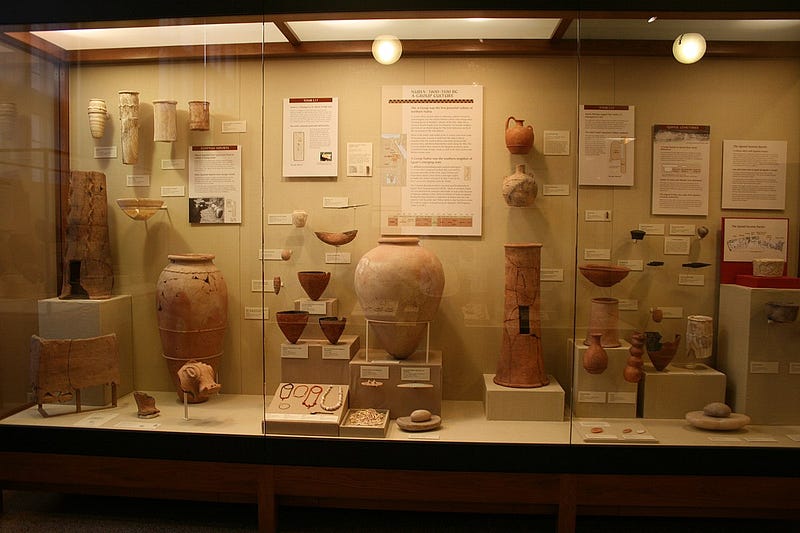# Nubian Civilization: The Pioneers of Pyramid Construction
Written on
Chapter 1: The Rise of Nubia
At its zenith, the Nubian kingdom emerged as a formidable entity, rivaling Egypt in both size and influence. For a significant period, Nubia even managed to exert control over the lands traditionally ruled by the pharaohs. Renowned for their craftsmanship and valor, the Nubians were a force to be reckoned with on the battlefield. What further insights can we glean about Nubia and its people? Let’s delve deeper into this intriguing history.

Nubia, located along the middle stretch of the Nile between the VI and I cataracts, corresponds to modern-day northern Sudan and southern Egypt. Long before our era, this region experienced a more humid climate, rich with savanna-like vegetation. The abundance of natural resources positioned Nubia as a significant player in the region, but it also made it a target for neighboring territories. The name "Nubia" itself originates from the Roman period, derived from the Egyptian word "nb," which translates to "Land of Gold."
Section 1.1: The Origins of the Nubians
The earliest signs of settlement in Nubia, characterized by pottery remnants, date back to the Mesolithic era. Between 4000 and 3000 BCE, inhabitants began to cultivate the land, leading to the emergence of the first identifiable culture in Nubia, known as Group-A, as classified by the American archaeologist George Reisner. It is believed that this culture drew some influences from the nascent Egyptian civilization. Interestingly, some scholars propose that Nubian civilization may have been a foundational influence on ancient Egypt.
By around 2200 BCE, another cultural group, Group-C, developed in Lower Nubia, while the Kerma culture flourished in Upper Nubia, named after the city situated south of the III cataract.

Section 1.2: Relations with Egypt
Initially, Nubian and Egyptian cultures coexisted peacefully. During the Group-A era (3700 BCE to 3250 BCE), trade flourished between the two regions. Nubia provided Egypt with valuable resources like gold, ebony, and ivory, while receiving copper, tools, and grains in exchange.
However, tensions escalated around 2500 BCE when Egyptians began to conquer parts of Upper Nubia. This situation shifted around 2160 BCE with the onset of Egypt's First Intermediate Period, allowing the Kerma kingdom to distance itself from Egyptian dominance. The ascendance of the XII dynasty, particularly under Senusret I, saw renewed attempts to control Nubia, although these efforts faced significant resistance.
Chapter 2: The Kingdom of Kush
As Egypt declined in the 11th century BCE, Nubia emerged once again as an independent state. The rulers of Kush established their authority, with Alara being the first historically confirmed king, who made Napata the capital. This city remained significant until 590 BCE when it was conquered by Pharaoh Psamtik II, prompting a move to Meroe.
Between 790 and 656 BCE, the Kingdom of Kush ruled over Egypt, beginning with Kashta’s expansion and culminating in Piankhi's ascendancy, marking the start of the 25th dynasty that dominated the Nile until the Assyrian invasion.
In this enlightening video, "Discovering Ancient Nubia: Kings and Pyramids in the Sudan," we explore the remarkable history of Nubia and its influence on ancient Egypt, focusing on the architectural marvels of the Nubian pyramids.
Chapter 3: Nubian Art and Culture
Despite leaving behind few artifacts, the ancient Nubians exhibited a rich cultural heritage. They may not have developed a writing system, but excavations have unearthed various artifacts, including ceramic figurines and ritual bowls. While some aspects of Nubian art show similarities to Egyptian styles, many features were distinctly Nubian, as highlighted by murals discovered in burial temples, showcasing African wildlife like zebras and giraffes.
During the Kush era, Nubian rulers were interred in pyramids, a tradition likely initiated by Piankhi, though Nubian pyramids differ from their Egyptian counterparts, reflecting a unique cultural identity.
The second video, "Who Really Built the Pyramids?" delves into the construction techniques and cultural significance behind the pyramids, shedding light on Nubia's architectural prowess.
Chapter 4: Nubian Achievements
The Nubians gained a reputation for their exceptional craftsmanship, particularly in materials like ivory, ebony, and gold. Their intricate designs influenced even Egyptian artisans. They excelled in creating composite bows with high draw weights and developed innovative finger protection for archers.
The Kush period saw Meroe rise as a critical center for producing agricultural and military tools, showcasing the Nubians' advancements in metallurgy.
Section 4.1: Warriors of Nubia
Renowned as "Ta-Setiu," or "Land of the Bow," Upper Nubian warriors were highly skilled archers, often serving in the Egyptian army as mercenaries. Nubian prowess in archery was so esteemed that one Egyptian fort in Nubia was named "shield against arrows."
Burial practices in Nubia further illustrate the significance of archery, with warriors entombed alongside their weapons, and rulers depicted wielding bows.
The Nubians' martial skills were so formidable that even Roman forces, while eventually conquering parts of Nubia, found themselves challenged by Nubian military tactics.
Chapter 5: The Decline of Nubia
By the end of the third century, the Nubian landscape was dominated by Group-X, a nomadic tribe known as the Nobads. Following their victory over the Blemys, Nubia underwent a gradual Christianization process, leading to the establishment of three Christian kingdoms by the 6th century: Nobatia, Makuria, and Alodia.
The 7th century saw Arab invasions that further isolated Nubia from other Christian nations, culminating in a complete Islamization between the 14th and 16th centuries. Eventually, Nubia was integrated into the Sultanate of Sennar and came under the dominion of Egypt's Pashas in the 19th century.

Attention all readers!
As content creators on Medium.com, we face minimal compensation for our hard work. If you find value in my articles, please consider supporting me on my “Buy Me a Coffee” page. Your small contributions can make a big difference in fueling my passion for creating quality content. Thank you for your support!
